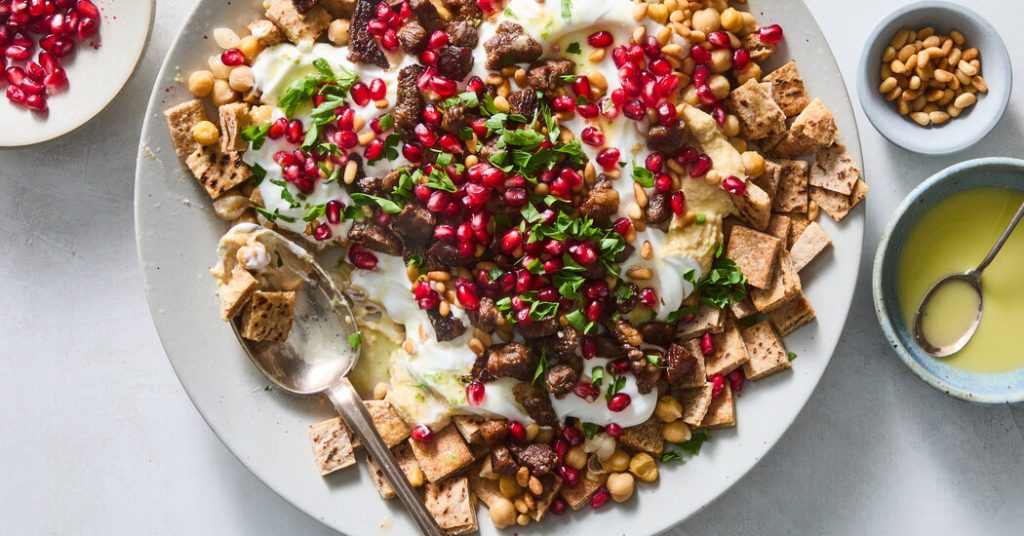When Salam Dakkak was growing up in Jordan, dinner didn’t end when the plates were cleared. It simply transformed.
Her mother would take whatever remained — a spinach stew, a lentil soup, even sautéed vegetables — and tear up old bread, reheat the dish, pour it on top and finish it all with a cool yogurt sauce and some fried nuts. “It wasn’t just leftovers,” Ms. Dakkak said. “It was a brand-new meal.”
That meal had a name: fatteh.
Long before appearing on restaurant menus or Instagram feeds, fatteh, from the Arabic verb fatta (to break or tear), was a tradition across Arab households, a generous layered dish that breathes new life into food.
Today, Ms. Dakkak, 62, the chef-owner of Bait Maryam in Dubai, serves fatteh at her Levantine restaurant in the classic chickpea-and-yogurt style and in countless other interpretations — some she even helped pioneer. Msakhan, the Palestinian dish of roast chicken with sumac and onions, was, according to her, first served as fatteh in her restaurant.
“The point is to not waste food,” Ms. Dakkak said. “Whatever you have leftover, you repurpose, you make beautiful, you add some new elements and then — ya allah — just try how delicious it becomes.”
“People are turning everything into fatteh,” said Sawsan Daana, a Kuwait-based Palestinian chef and founder of Matbakhi.
Online, you’ll find rich, refined, even theatrical versions of the dish. But at its heart is always an unchanged structure: crispy bread, topped with something warm (legumes, vegetables or meats, and in more traditional iterations, rice), something cooling (a yogurt or chili-lemon sauce), and a crunchy element (fried nuts, pomegranate seeds or more toasted bread). Once you have these few elements, you can assemble a different version every night or pull it together in minutes when company comes over.
But, despite all that, fatteh hasn’t quite caught on with home cooks in the United States. “A lot of foods like fatteh, mulukhiyah, bamieh — any of these foods we grew up eating at home — they are a lot less popular in restaurants,” said Ahmad Alzahabi, 28, a Michigan-based Syrian content creator, who added that restaurants help introduce Americans to foods they’d eventually want to make in their own kitchens.
For restaurants, it can be a matter of execution. “It’s a dish that needs to be prepared and eaten right away — the hot and cold, the soft and crunch, those elements have to come together just right,” said Philippe Massoud, the chef and owner of Ilili in New York and Washington, D.C., who has occasionally served fatteh over the years. “So you have to prepare and serve it last, and eat it first.” This has made fatteh impractical for him to keep on regular rotation.
But that hasn’t deterred others. At Oleana Restaurant and Moona in Cambridge, Mass., fatteh is always on the menu and one of their top sellers. “I fear our customers will launch a revolution if we remove it,” said Mohamad El Zein, the owner of Moona, laughing.
Still, where fatteh always shines is at home. It’s an economical, adaptable and endlessly forgiving blueprint, filling without being fussy and impressive without trying too hard, the kind of meal that makes use of what’s on hand but still feels like a feast.
Or, as Ms. Dakkak said: “Fatteh is not just one dish, it’s a format. It can be anything.”
Follow New York Times Cooking on Instagram, Facebook, YouTube, TikTok and Pinterest. Get regular updates from New York Times Cooking, with recipe suggestions, cooking tips and shopping advice.


